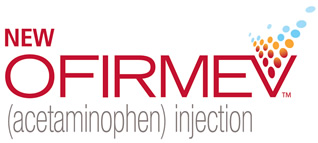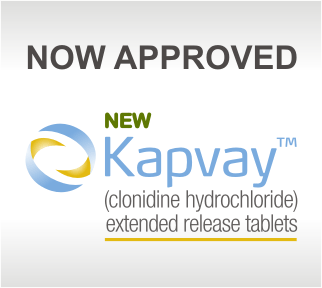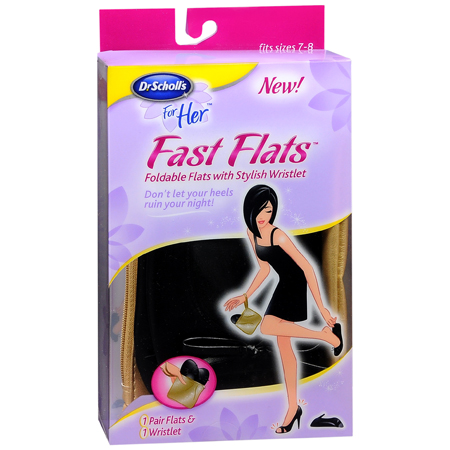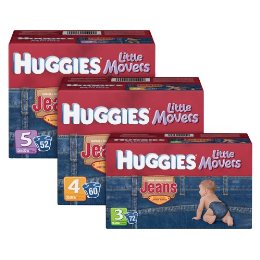FDA Approval: Brilique
LONDON, Dec 6 (Reuters) - AstraZeneca's new heart medicine Brilique -- or Brilinta -- won final clearance from EU regulators on Monday, putting it on track to compete with Plavix, the world's second biggest-selling drug, next year.
AstraZeneca is relying on revenues from the new product to offset expiring patents on some of its best-selling medicines, such as heartburn treatment Nexium and Seroquel for schizophrenia.
The approval by the European Commission had been expected following a positive recommendation from experts at the European Medicines Agency in September.
AstraZeneca said that of the European markets that would start selling Brilique in 2011, the majority of launches would occur in the second half of the year due to pricing and reimbursement negotiations.
The drug is recommended for preventing dangerous blood clots in patients with serious chest pain or previous heart attacks.
It is a competitor for Sanofi-Aventis and Bristol-Myers Squibb's top-seller Plavix, which had sales last year of more than $9.5 billion, and AstraZeneca will face a tough competitive marketplace, since Plavix is off patent in parts of Europe and loses U.S. patent protection in 2012.
In the United States, where the medicine will be sold as Brilinta, the Food and Drug Administration is due to decide on whether to approve it by Dec. 16. It was endorsed by a U.S. advisory panel in July, despite a perplexing lack of benefit seen among a North American sub-group of patients in a clinical trial that found it was superior to Plavix overall. (Reporting by Ben Hirschler, editing by Kate Kelland)
FDA Approval: Halaven
FDA Approves Eisai Inc. (ESALF.PK)'s Halaven For Late-Stage Breast Cancer
11/15/2010
SILVER SPRING, Md., Nov. 15, 2010 /PRNewswire-USNewswire/ -- The U.S. Food and Drug Administration today approved Halaven (eribulin mesylate) to treat patients with metastatic breast cancer who have received at least two prior chemotherapy regimens for late-stage disease.
Breast cancer is the second leading cause of cancer related death among women, according to the National Cancer Institute. This year, an estimated 207,090 women will be diagnosed with breast cancer, while 39,840 women will die from the disease.
Halaven is a synthetic form of a chemotherapeutically active compound derived from the sea sponge Halichondria okadai. This injectable therapy is a microtubule inhibitor, believed to work by inhibiting cancer cell growth. Before receiving Halaven, patients should have received prior anthracycline- and taxane-based chemotherapy for early or late-stage breast cancer.
Halaven's safety and effectiveness were established in a single study in 762 women with metastatic breast cancer who had received at least two prior chemotherapy regimens for late-stage disease. Patients were randomly assigned to receive treatment with either Halaven or a different single agent therapy chosen by their oncologist.
The study was designed to measure the length of time from when this treatment started until a patient's death (overall survival). The median overall survival for patients receiving Halaven was 13.1 months compared with 10.6 months for those who received a single agent therapy.
"There are limited treatment options for women with aggressive forms of late-stage breast cancer who have already received other therapies," said Richard Pazdur, M.D., director of the Office of Oncology Drug Products in the FDA's Center for Drug Evaluation and Research. "Halaven shows a clear survival benefit and is an important new option for women."
The most common side effects reported by women treated with Halaven include a decrease in infection-fighting white blood cells (neutropenia), anemia, a decrease in the number of white blood cells (leukopenia), hair loss (alopecia), fatigue, nausea, weakness (asthenia), nerve damage (peripheral neuropathy), and constipation.
Other FDA-approved therapies used to treat late-stage, refractory breast cancer include Xeloda (capecitabine) for patients with breast cancer resistant to paclitaxel and anthracycline-containing chemotherapy; Ixempra (ixabepilone) for patients with late- stage disease after failure of an anthracycline, taxane and Xeloda; and Ixempra plus Xeloda for patients with late-stage disease after failure of anthracycline- and taxane-based chemotherapy.
Halaven is marketed by Woodcliff Lakes, N.J. -based Eisai Inc.
For more information:
FDA: Office of Oncology Drug Products
NCI: Breast Cancer
Media Inquiries: Erica Jefferson, 301-796-4988, erica.jefferson@fda.hhs.gov
Consumer Inquiries: 888-INFO-FDA
SOURCE U.S. Food and Drug Administration
FDA Approval: Ofirmev

PRNewswire via COMTEX News Network/ -- Cadence Pharmaceuticals, Inc. (Nasdaq: CADX) announced last week that the U.S. Food and Drug Administration (FDA) has granted marketing approval for OFIRMEV(TM) (acetaminophen) injection, the first and only intravenous (IV) formulation of acetaminophen to be approved in the United States. OFIRMEV is indicated for the management of mild to moderate pain, the management of moderate to severe pain with adjunctive opioid analgesics, and the reduction of fever.
"The approval of OFIRMEV is a significant milestone for Cadence as we advance our mission to improve the lives of hospitalized adults and children," said Ted Schroeder, President and CEO of Cadence. "IV acetaminophen is the unit market share leader among all injectable pain medications in Europe. With our planned launch early in the first quarter of 2011, we believe that OFIRMEV will fill a significant gap in the United States for the treatment of pain and fever in the hospital setting."
Acute pain, particularly postoperative pain, often requires a multi-modal approach in which two or more analgesics are used with the goal of providing better analgesic efficacy. U.S. physicians already prescribe acetaminophen frequently in combination with opioids for oral management of pain, where it is the most widely used non-opioid in fixed combination therapies. In clinical studies, OFIRMEV improved pain relief, reduced opioid consumption, and improved patient satisfaction when used as part of a multi-modal regimen.
"OFIRMEV is a long-awaited and much needed addition to postoperative pain management," said Eugene R. Viscusi, M.D., Director of Acute Pain Management at Thomas Jefferson University in Philadelphia. "With the approval of OFIRMEV, clinicians will now be better able to use a multi-modal approach to pain management in the hospital setting, when oral medication can't be used."
FDA Pharmaceutical Approval: Kapvay

FLORHAM PARK, N.J., Oct. 4 /PRNewswire/ -- Shionogi Inc., the U.S.-based group company of Shionogi & Co., Ltd., today announced the U.S. Food and Drug Administration approval of the non-stimulant medication KAPVAY™ (clonidine hydrochloride) extended-release tablets, an extended-release oral formulation for the treatment of Attention Deficit Hyperactivity Disorder (ADHD) in children and adolescents ages 6-17 years. KAPVAY™ is the only formulation of clonidine hydrochloride approved by the FDA for the treatment of ADHD, and is the first and only FDA-approved ADHD treatment indicated for use as add-on therapy to stimulant medication. KAPVAY™ can also be used as monotherapy when treating ADHD.
An oral, non-stimulant, twice-daily therapy, KAPVAY™ is a centrally acting alpha2-adrenergic receptor agonist. While the mechanism of action of alpha2 agonists in ADHD is not known, it is believed to involve the pre-frontal cortex (PFC) of the brain. Studies suggest that the PFC regulates attention and plays a critical role in impulse control, working memory and executive function.
"The FDA approval of KAPVAY™ represents an exciting milestone in the field of ADHD," said Donald C. Manning, MD, PhD, Chief Medical Officer of Shionogi Inc. "The extended-release formulation of KAPVAY™ minimizes the peaks and troughs in blood levels, thereby decreasing overactivation of the alpha receptors in the brain and periphery. We look forward to providing this important, beneficial treatment for ADHD to patients, both as monotherapy and add-on therapy to stimulants."
"ADHD is a complex disorder that requires individualized treatment. While there are prescription treatment options available, many ADHD patients on stimulants do not achieve adequate control of symptoms," explained Rakesh Jain, MD, MPH, Director of Psychiatric Drug Research for R/D Clinical Research at Lake Jackson, Texas, and an investigator in the clinical trials. "KAPVAY™, when added to a stimulant, addresses an unmet need, and improves ADHD symptoms beyond what is achieved by stimulants alone. This is a significant step forward for the treatment of ADHD to have an approved product for add-on therapy in our treatment armamentarium."
ADHD is a neurobehavioral disorder that occurs in childhood and may continue into adolescence and adulthood, which affects more than 4.5 million children ages 3-17 in the U.S. alone. Approximately 3-7 percent of U.S. school-aged children are believed to suffer from this disorder. Symptoms include difficulty staying focused and paying attention, difficulty controlling behavior, and hyperactivity/over-activity.
For more information on Kapvay or Shionogi, please visit the corporate website or Kapvay product website.
The New Quick Change Shoe

DR. SCHOLL'S has tackled one of woman's biggest modern day dilemmas: cute or comfortable? It's no secret that most fashionable shoes aren't suitable for wearing all day ... whether it's a on business trip or a girl's night out, we want to look our best but struggle with achy feet at the expense of our high heeled kicks.
A few weeks ago, "Merck Consumer Care announced the launch of DR. SCHOLL’S® FOR HER Fast Flats™, a stylish and practical solution for women who need a break from their uncomfortable shoes.
Fast Flats™ are compact and foldable shoes that fit discreetly in a purse and come with a wristlet for easy storage and portability. This spare pair is perfect for nights out, weddings, traveling through airports and other times when a long trek in heels won’t cut it. Women can even wear Fast Flats™ during their commute, and then slip in to their fashionable shoes just in time to hit the office."
According to Jay Morgan, vice president of Research and Development for DR. SCHOLL’S®, “While women love their stylish shoes, many feel they have to sacrifice comfort to wear them for an entire day or night. We know that’s not the case, and we wanted to give women a great solution for their feet. Fast Flats™ are fashionable and affordable, enabling women to be prepared for the many scenarios they face throughout the day without having to worry about shoe discomfort.”
As a woman who has spent countless hours in uncomfortable shoes at the sake of fashion, and as someone who has been naming new products for over a decade, I can appreciate both the uniqueness of this new offering, and the simpleness of the name. DR. SCHOLL'S could have taken a variety of directions when naming this new product, but they chose to be descriptive, and emphasize the ease of use and quick-change nature that women prefer. Fast Flats is set up to be a category definer (as illustrated by the current surge in knock-offs). The messaging of the name makes it easy to for the customer to understand the product and the benefit. Alliteration lends to memorability, and the two syllable name construction adds easy recall.
I'm excited to try my own pair. What do you think? Ready for a quick change?
FDA Pharmaceutical Approval: Suboxone
According to ClinicaSpace, MonoSol Rx, the developers of PharmFilm® technology and a drug delivery company specializing in film pharmaceutical products, today announced that its partner, Reckitt Benckiser Pharmaceuticals Inc., a wholly-owned subsidiary of Reckitt Benckiser Group plc (LSE: RB), has received approval from the U.S. Food and Drug Administration (FDA) to market Suboxone® (buprenorphine HCl/naloxone HCl dihydrate) sublingual film for the treatment of opioid dependence.
This is the second U.S. marketing authorization for a prescription product based on MonoSol Rx's PharmFilm® technology, closely following the July 2010 FDA approval of the anti-emetic Zuplenz® (ondansetron) oral soluble film.
Suboxone® sublingual film delivers a convenient, quick-dissolving therapeutic dose of buprenorphine, a partial opioid agonist, and naloxone, an opioid antagonist. The drugs rapidly absorb under the tongue to ensure compliance.
A. Mark Schobel, President and CEO of MonoSol Rx, stated, "We are very pleased to announce the approval of Suboxone® sublingual film and disclose our important relationship with Reckitt Benckiser. Following the FDA approvals of Suboxone® sublingual film and Zuplenz® oral soluble film, both within the past two months, the agency has clearly accepted our proprietary PharmFilm® technology as a viable prescription drug dosage form.
FDA Pharmaceutical Approval: Zuplenz
FDA Approves Strativa Pharmaceuticals' Zuplenz (ondansetron) Oral Soluble Film for the prevention of postoperative, highly and moderately emetogenic cancer chemotherapy-induced, and radiotherapy-induced nausea and vomiting.
"The FDA approval of Zuplenz marks an important milestone for Strativa as it reinforces our commitment to enhancing prescription products to meet the different needs of patients," said John A. MacPhee, President, Strativa Pharmaceuticals. "Zuplenz offers an innovative and convenient, easy-to-take formulation for patients who have trouble swallowing tablets, while providing the trusted efficacy expected from ondansetron."
For more information regarding Pharmaceutical Naming or Brand Development, contact Vince Budd at vbudd@addisonwhitney.com
Jorts, Jeggings and Now... Jiapers?

......................................................................................................................................................................
So we've seen all jorts (jeans + shorts) and jeggings (jeans + leggings) but a jiaper?!? Jeepers! Must we subject our little ones to American's obsession with denim by putting them in a diaper disguised as a jean brief? According to Huggies (and 4 enthusiastic mothers' reviews on target.com) we should. Would you dress your child in Huggie's Little Movers Jeans? Have you contributed to the product's out of stock status on target.com? Would you?
Contributed by Allison Jobes
Green Brands Put to the Test

We've talked a lot about how brands are trying to add "Green" to their corporate color palette, sometimes with real, valuable initiatives and sometimes with just words. (Green: Who Can Claim It? and Greenwashing) So in honor of this Earth Day, the 40th Anniversary actually, we'd like put some of those brands to the test to "verdify" how green they really are.
Last month, SunChips introduced the world's first fully-compostable chip bag. The new bags, made of plant-based materials, should fully decompose in 14 weeks (under typical hot composting conditions). A few weeks later, Snyder's of Hanover announced it too would be using sustainable packaging (on its organic line of pretzels).
I don't have a compost pile, much less the perfectly mixed 1-2-2-2-1 “hot" compost that SunChips recommends, but I do find the random scrap of trash in my yard after trash day. Would the bags eventually decompose in my yard or on the side of the road? We plan to find out.
For our Earth Day experiment, we have staked one of these composting bags to the ground to simulate errant trash. We will photograph our progress and share the results on the blog.
What the buzz, Google?

...............................................................................................................................................
I woke up this morning to find out something was different with my Gmail. Overnight it seems as if Google and Facebook have fornicated their technological impulses and created the newest love child of the social networking world: Google Buzz. Though Twitter might demand a paternity test from Google, this “buzzing” community is the latest of social networks trying to innovate fast-track communication.
Google Buzz, channeled through Google's popular Gmail service, allows users to micro-blog and upload pictures as well as link to other users and websites. And like one of its predecessors, Twitter, it lets you “follow” other members and blog about, well, whatever you want. However, it definitely has Facebook’s eyes, allowing you to comment on updates directly without all the weird @, #, etc. symbols that I still don’t understand with “tweets”. It also has the highly coveted “like” feature that Facebookers obnoxiously seem to enjoy. (Hmm maybe Google Buzz will get a dislike option that Facebook has yet to cave to – could be interesting.)
However, unlike the launch of other social networks, Google Buzz has already taken the initiative for current Gmail account holders. Before I even heard the buzzing, I apparently was following a couple dozen of my closest Gmail contacts and a handful were following me. I also had a link to the “Buzz” conveniently placed under my Inbox link, equipped with a Simon Says-esque color wheel, just in case I missed it.
